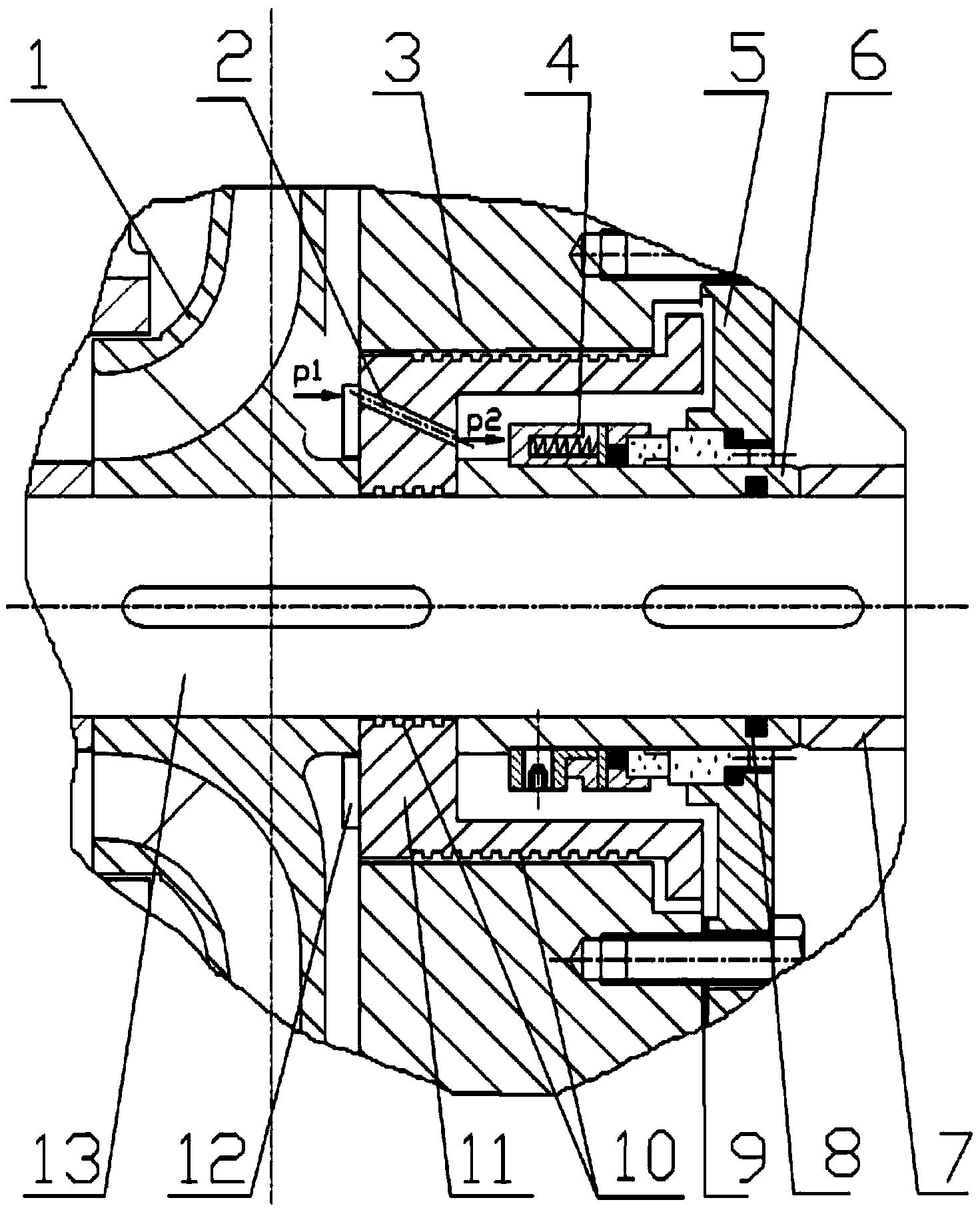Self-circulation pressure reduction mechanical seal structure
A mechanical seal, self-circulating technology, used in mechanical equipment, machines/engines, liquid fuel engines, etc., can solve the problems of static ring wear, high seal chamber pressure, high seal chamber pressure, etc., to improve the life of mechanical seals and bearings. , The effect of less liquid leakage and lower pressure value
- Summary
- Abstract
- Description
- Claims
- Application Information
AI Technical Summary
Problems solved by technology
Method used
Image
Examples
Embodiment Construction
[0015] In order to make the technical means, creative features, goals and effects achieved by the present invention easy to understand, the present invention will be further described below in conjunction with specific illustrations.
[0016] Such as figure 1 As shown, the mechanical seal structure of the self-circulating decompression device includes a pump shaft 13, an impeller 1 is provided on the left side of the pump shaft 13, a floating pump cover 11 is provided on the right side of the impeller 1, and auxiliary blades 12 are provided on the left side of the floating gland 11. Between the impeller 1 and the floating pump cover 11 is a high-pressure sealing chamber, the floating pump cover 11 is provided with a pump body 3, the right side of the floating pump cover 11 is provided with a mechanical seal bushing 6, and the periphery of the mechanical seal bushing 6 is provided with a mechanical seal 4, A low-pressure sealing cavity is formed between the floating pump cover ...
PUM
 Login to View More
Login to View More Abstract
Description
Claims
Application Information
 Login to View More
Login to View More - R&D
- Intellectual Property
- Life Sciences
- Materials
- Tech Scout
- Unparalleled Data Quality
- Higher Quality Content
- 60% Fewer Hallucinations
Browse by: Latest US Patents, China's latest patents, Technical Efficacy Thesaurus, Application Domain, Technology Topic, Popular Technical Reports.
© 2025 PatSnap. All rights reserved.Legal|Privacy policy|Modern Slavery Act Transparency Statement|Sitemap|About US| Contact US: help@patsnap.com

